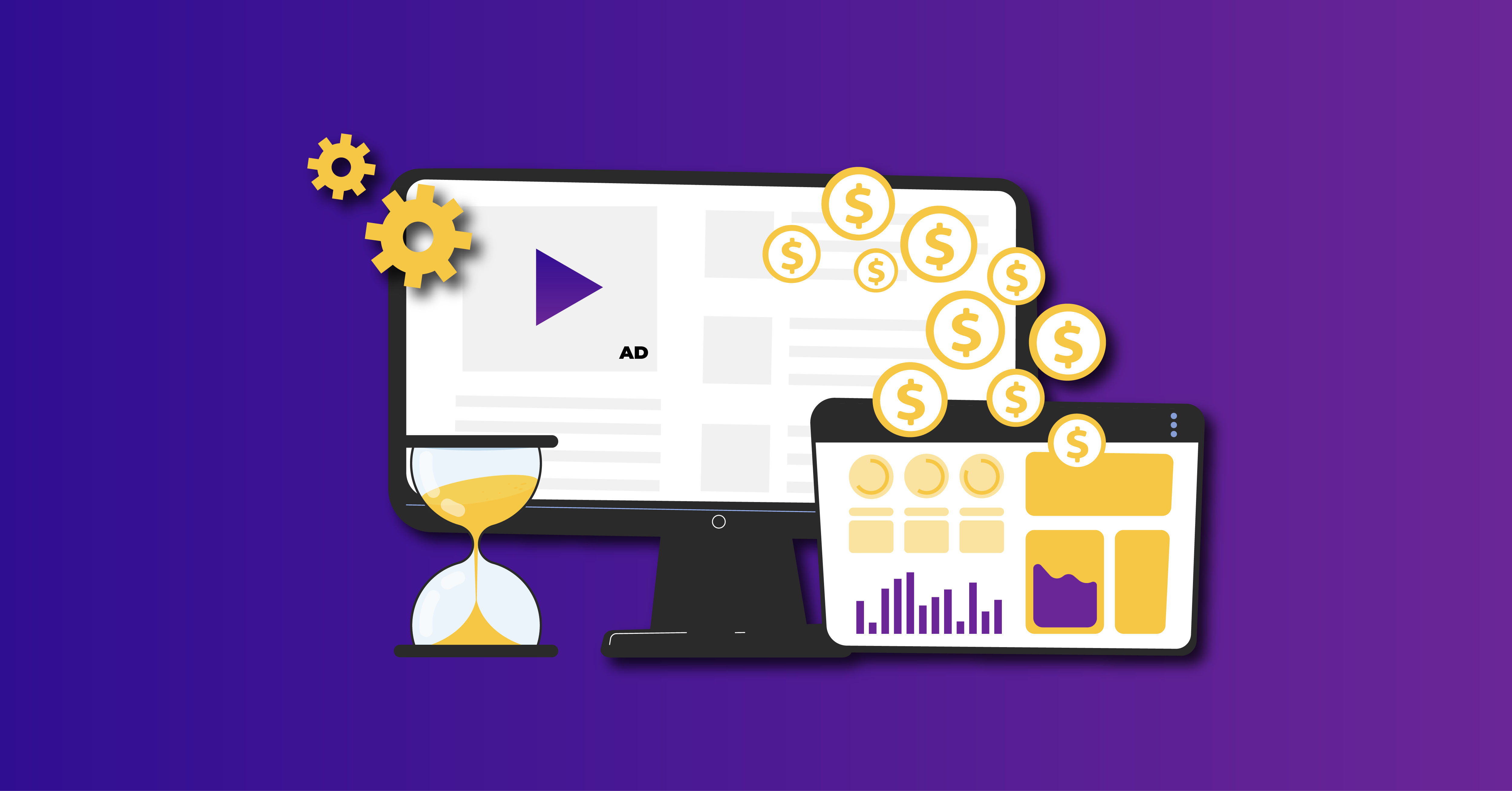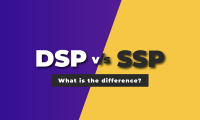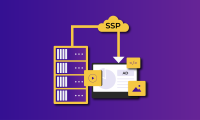Real-time Bidding in Programmatic- Guide for Publishers
In the realm of programmatic advertising, every passing second directly impacts revenue generation, emphasizing the crucial need for efficient operations and timely decision-making. Real-time bidding (RTB) emerges as a game-changer for publishers, elevating the potential of programmatic advertising. While programmatic eliminates manual labor, RTB ensures rapidity and secures the highest bids for publishers’ valuable ad space, maximizing their revenue potential. This dynamic duo has reshaped the advertising landscape, driving automation, speed, and optimal returns for publishers in the ever-evolving digital era.
What is real-time bidding in programmatic advertising?
Real-time bidding (RTB) is an integral part of programmatic advertising, enabling advertisers to bid and compete for ad impressions in real-time auctions. RTB’s significance lies in its ability to maximize ad revenue for publishers by dynamically matching the highest bidding advertiser with each impression, ensuring optimal monetization of their inventory. Every millisecond of the RTB process impacts publishers’ ad revenue, making it crucial to prioritize efficiency and responsiveness to capture the most lucrative advertising opportunities. It is one of the top monetization strategies of 2023 that publishers must employ.
What is the role of real-time bidding in programmatic advertising?
The role of real-time bidding (RTB) in programmatic advertising is crucial as it revolutionizes the way ad impressions are bought and sold in an automated and instantaneous manner. In the early days of advertising, purchasing ad inventory followed a rigid and manual process. Advertisers had to negotiate and buy ad space in advance, often relying on fixed-price agreements.
However, this approach had its drawbacks, lacking the agility, precision targeting, and real-time ad campaign optimization capabilities that are essential in today’s digital landscape. The ingenious concept of real-time bidding (RTB) was born to overcome these limitations. It disrupted the traditional ad buying process by introducing dynamic auctions and automation into the equation. Advertisers could now bid for individual ad impressions in real-time, tailoring their campaigns to specific audiences based on data and preferences.
RTB enables advertisers to access a vast pool of inventory, reaching their desired audience with greater precision. It allows advertisers to bid on impressions based on their value and relevance, optimizing their ad spend and maximizing campaign performance. Publishers, on the other hand, can monetize their inventory more effectively by exposing it to a larger pool of potential buyers, resulting in increased revenue.
RTB became the catalyst for programmatic advertising, revolutionizing the industry by introducing a nimble and data-driven approach to buying and selling ad inventory. It ushered in a new era of flexibility, precision, and real-time decision-making, allowing advertisers to reach their target audience with greater accuracy while providing publishers with enhanced monetization opportunities.
How does real-time bidding work in programmatic advertising?
Real-time bidding (RTB) is a critical component of programmatic advertising that facilitates the buying and selling of ad impressions in real-time auctions. The process involves several key steps, with the involvement of various ad tech platforms playing distinct roles.
Here are the phases involved in real-time bidding:
- User Visits a Website or App: A user visits a website or app that serves as an ad inventory source. The publisher owns the digital property and aims to monetize it through programmatic advertising.
- Ad Space Availability: When a page or app screen loads, information about available ad spaces (impressions) is sent to a Supply-Side Platform (SSP). The SSP acts as a bridge between publishers and ad exchanges.
- SSP’s Role: The SSP evaluates the available ad impressions, collecting data about the user, website/app context, and other relevant parameters. It makes this inventory data accessible to potential buyers.
- Ad Exchange: The SSP sends the information to an ad exchange, which acts as a marketplace for buying and selling ad inventory. Top ad exchanges, such as Google AdX, OpenX, or Rubicon Project, host real-time auctions.
- Demand-Side Platforms (DSPs): Advertisers and agencies utilize demand-side platforms to manage their programmatic ad campaigns. DSPs access the ad exchanges and participate in real-time auctions on behalf of advertisers.
- Auction and Bid Requests: Ad exchanges conduct lightning-fast auctions, where DSPs submit bid requests containing relevant information about the user, ad space, and targeting criteria. Multiple DSPs compete by placing bids in real-time.
- Winning Bidder Determination: The ad exchange considers the submitted bids and determines the winning bidder based on the highest bid value. The winning DSP’s ad creative is selected for display.
- Ad Creative Delivery: The winning DSP communicates with an ad server to deliver the appropriate ad creative to the SSP, ensuring it reaches the user’s browser or app in real-time.
- Ad Display: Finally, the user’s browser or app displays the winning ad creative, allowing the user to see and potentially interact with the ad.
Throughout this process, various ad tech platforms collaborate to enable real-time bidding. The SSP facilitates inventory availability, the ad exchange hosts auctions, the DSPs represent advertisers, and the ad server ensures proper ad creative delivery. This intricate ecosystem empowers publishers to efficiently monetize their ad inventory while enabling advertisers to target their desired audience in a dynamic and automated manner.
What are the other types of bidding in programmatic advertising?
While RTB is a widely used and prominent method, there are other types of bidding in programmatic advertising
- Programmatic direct
Programmatic direct bidding brings back some aspects of traditional advertising by enabling direct interactions between publishers and advertisers. While the process is faster and more automated, programmatic direct maintains the authenticity of direct communication and negotiation.
In traditional advertising, direct interaction allowed advertisers to have more control over ad placements and negotiate pricing with publishers. Programmatic direct replicates this by facilitating direct deals between the two parties. Ad inventory is bought and sold without the need for real-time auctions, as prices are typically pre-negotiated.
This type of bidding offers publishers more control over who can access their inventory, maintaining a direct relationship and fostering a sense of authenticity.
What is the difference between programmatic direct and real-time bidding?
Unlike the auction-based nature of RTB, programmatic direct involve direct negotiations between publishers and advertisers. The inventory is bought and sold through private marketplaces or automated guaranteed deals, with pre-negotiated prices.
- Preferred deals
Preferred deals, also referred to as “non-guaranteed deals,” grant publishers the ability to present exclusive premium ad inventory to select advertisers prior to offering it to the wider market. This grants advertisers access to top-tier inventory with set prices and priority access, ensuring coveted ad placements for their campaigns.
Both large and small-scale publishers can leverage preferred deals to their advantage. While large publishers often have a wide range of premium inventory, small-scale publishers can also participate and benefit from preferred deals.
What is the difference between preferred deals and real-time bidding?
The key difference between real-time bidding (RTB) and preferred deals in programmatic advertising lies in the pricing and inventory access mechanisms. RTB operates through real-time auctions where ad impressions are sold to the highest bidder in an automated and dynamic bidding process. On the other hand, preferred deals offer a fixed-price and priority access to premium inventory.
- Private auctions
In private auctions, publishers indeed have more control over which advertisers can participate and bid on their ad impressions. By limiting the number of invited advertisers, publishers can maintain a level of exclusivity and ensure that only selected advertisers with pre-approved credentials can participate.
This control allows publishers to curate a more targeted and desirable set of advertisers who align with their brand, content, or specific campaign requirements. It enables them to maintain the integrity of their inventory and protect their brand reputation by selecting advertisers who meet their criteria.
What is the difference between private auctions and real-time bidding in programmatic advertising?
The main difference between private auctions and real-time bidding (RTB) lies in the level of control over participating advertisers and the nature of the auction process. In private auctions, the focus is on quality and targeted access rather than open participation. Whereas in RTB, multiple advertisers can participate through open auctions and bid in real time for each impression.
- Header bidding
Header bidding is a popular type of bidding in programmatic advertising that revolutionized the traditional waterfall auction model. In a header bidding setup, publishers offer ad inventory to multiple demand sources simultaneously, before making ad calls to their ad server.
This allows publishers to gather bids from multiple demand partners in real-time, increasing competition and driving up the potential revenue for each impression. By integrating header bidding into their ad stack, publishers can optimize their ad monetization strategy and maximize yield by accessing a broader range of demand sources.
What is the difference between header bidding and real-time bidding (RTB)?
The main difference between header bidding and real-time bidding (RTB) lies in the auction mechanics and the integration within the programmatic ad serving process.
RTB operates on a per-impression basis, whereas header bidding is a technique that allows publishers to conduct a simultaneous auction among multiple demand sources before sending an ad request to their ad server.
What are the benefits of real-time bidding in programmatic advertising for publishers?
There are many reasons why should publishers use real-time bidding. Here are the top benefits of RTB in programmatic advertising for publishers
- Right demand sources
RTB in programmatic advertising empowers publishers to maximize their earnings by tapping into a broader pool of advertisers and effectively monetizing their inventory. The ability to access multiple demand sources through Supply-Side Platforms (SSPs) allows publishers to increase their revenue potential.
By expanding their exposure to various demand sources, publishers can attract more bids on their ad inventory. The competitive nature of real-time bidding enhances the publisher’s ability to take their website monetization to the next level and achieve better financial outcomes.
- High fill rates
Real-time bidding (RTB) in programmatic advertising can improve the likelihood of filling ad inventory with ads. By participating in real-time auctions where advertisers compete to display their ads, publishers have a higher chance of securing bids and filling their available ad slots.
RTB works by allowing advertisers to bid in real-time for each impression or ad opportunity. Publishers need to effectively manage their ad inventory and implement strategies that optimize the fill rate, such as effectively setting up their header bidding.
- Enhanced targeting
RTB integrates with data management platforms (DMPs) and other sources to access detailed user information. This data includes demographics, browsing behavior, location, interests, and more. Publishers can utilize this data to understand their audience better and target ads based on specific user attributes.
With RTB, publishers can receive real-time audience insights during the bidding process. Advertisers provide bid requests that include information about the user and the context of the impression. This data, combined with the publisher’s own insights, helps in making more informed targeting decisions.
- Increased control
Publishers have more control over varied aspects with real-time bidding (RTB). They can attain:
- Pricing control by setting minimum bid thresholds or floor prices for their ad inventory.
- Inventory control as they can define the types of ads they want to display, set ad format preferences, and choose specific placements on their website or app.
- Audience control that enables publishers to define their target audience and set specific targeting parameters.
- Brand safety by reviewing and approving ads before they are displayed and maintaining control over the content that appears on their platforms.
- Real-time analytics
RTB provides publishers with real-time data and insights on ad performance, impressions, click-through rates, and revenue. Furthermore, real-time bidding (RTB) data and insights can be combined with Google Analytics 4 (GA4) to provide publishers with more holistic performance analysis. It enables publishers to understand the impact of RTB on user engagement, conversions, and other metrics important to maximize revenue.
Real-time bidding (RTB) has emerged as a vital tool for publishers, poised to fuel further growth and help them thrive in the ever-evolving advertising landscape. With the rapid advancements in technology and changing consumer behaviors, embracing RTB has become imperative for publishers to stay relevant and competitive. In these transformative times, embracing RTB is not only advantageous but essential for publishers looking to flourish in the digital advertising realm.




Leave a Reply